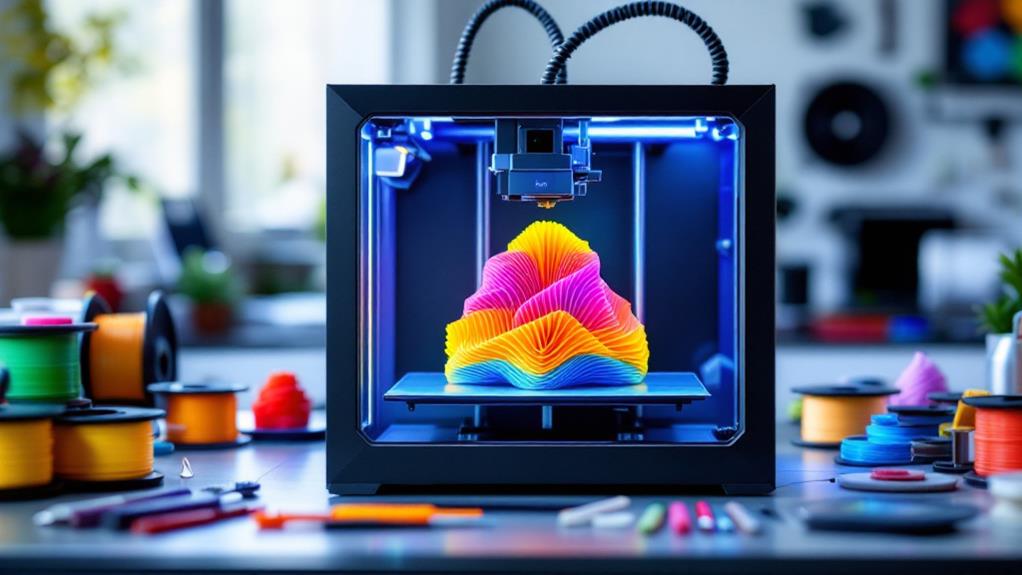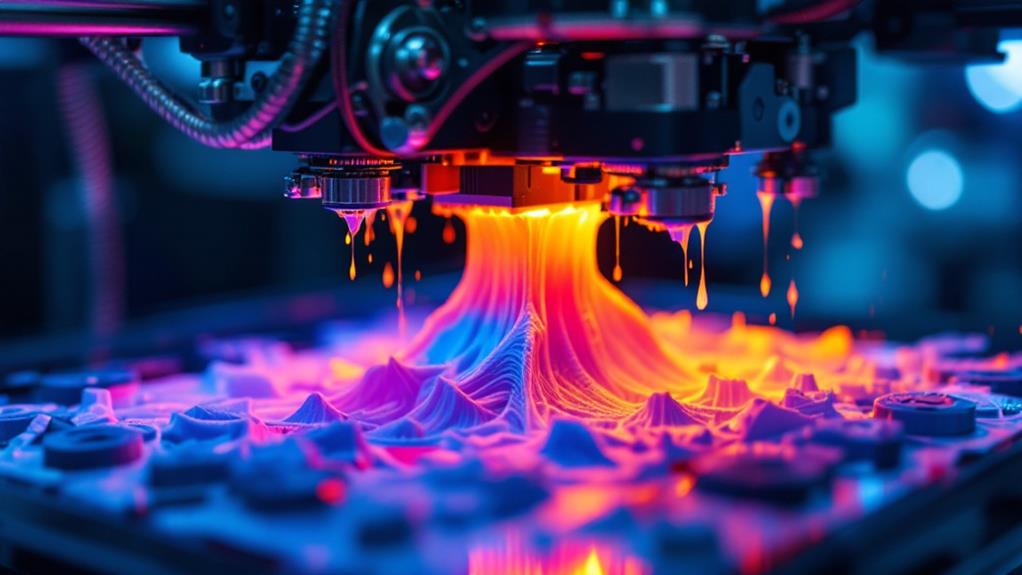3D Printer Science Projects: Creative Ideas for Kids and Adults
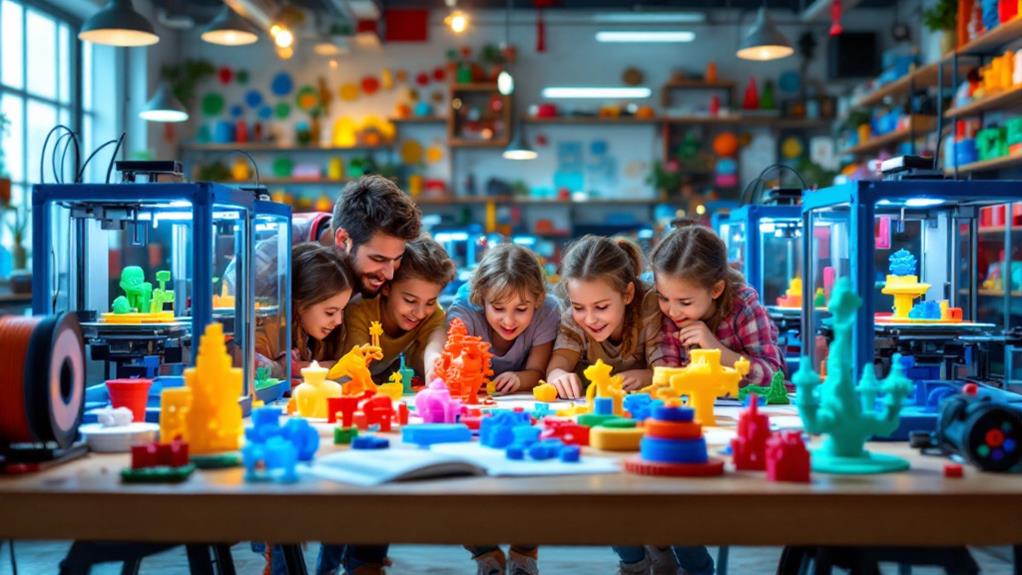
Immerse yourself in exciting 3D printer science projects perfect for curious minds of all backgrounds. You can start by designing custom keychains to get familiar with 3D modeling, then challenge yourself with simple robotics by printing components for a robotic arm. Educational models can bring complex science concepts to life, while puzzles provide a fun way to investigate problem-solving. Investigate structural engineering by creating architectural models or venture into wearable tech innovations. Improve your home with personalized decor or experiment with eco-friendly materials that promote sustainability. Each project offers a unique way to broaden your skills and spark new ideas.
Designing Custom Keychains
Designing custom keychains with a 3D printer is an exciting and accessible project for both beginners and seasoned makers. You start by imagining a design that speaks to your personality or interests. With 3D modeling software, create custom designs that reflect your creativity. There are many free and user-friendly tools available online, making it easy to experiment and learn as you go.
Once you've got your design ready, consider the keychain functionality. A keychain isn't just an accessory; it needs to be durable and practical. Think about the size and thickness to guarantee it won't break easily. You'll also need a loop or hole for attaching it to your keys, so don't forget to include that in your design.
After finalizing your design, it's time to set up your 3D printer. Select the right filament material, such as PLA or ABS, which are both strong and easy to print with. Load your design file into the printer software, and adjust settings like temperature and speed for best results. Before you know it, your custom keychain will be printing, transforming your digital concept into a tangible object.
Building Simple Robotics
With the advent of affordable technology, building simple robotics has become a thrilling project accessible to enthusiasts of all skill levels. Regardless of if you're a curious beginner or an experienced tinkerer, you can immerse yourself in the world of robotics with a 3D printer. One popular project is creating a functional robotic arm. You can start by designing and printing the arm segments, joints, and base, considering the movement and flexibility you'll need.
Once you've printed the components, assembling them becomes an exciting puzzle. The next step involves sensor integration, which brings the robotic arm to life. By incorporating sensors like touch or motion sensors, you can program the arm to respond to its environment, creating interactive movements. This step is essential to make the arm perform tasks or react to specific inputs.
Don't forget about the importance of a microcontroller, such as an Arduino, to link the sensors and motors. This allows you to write simple code that controls the arm's operations. Experimenting with different configurations and programming techniques can improve your understanding of robotics and provide endless possibilities for customization. The satisfaction of seeing your creation move is both rewarding and inspiring.
Crafting Educational Models
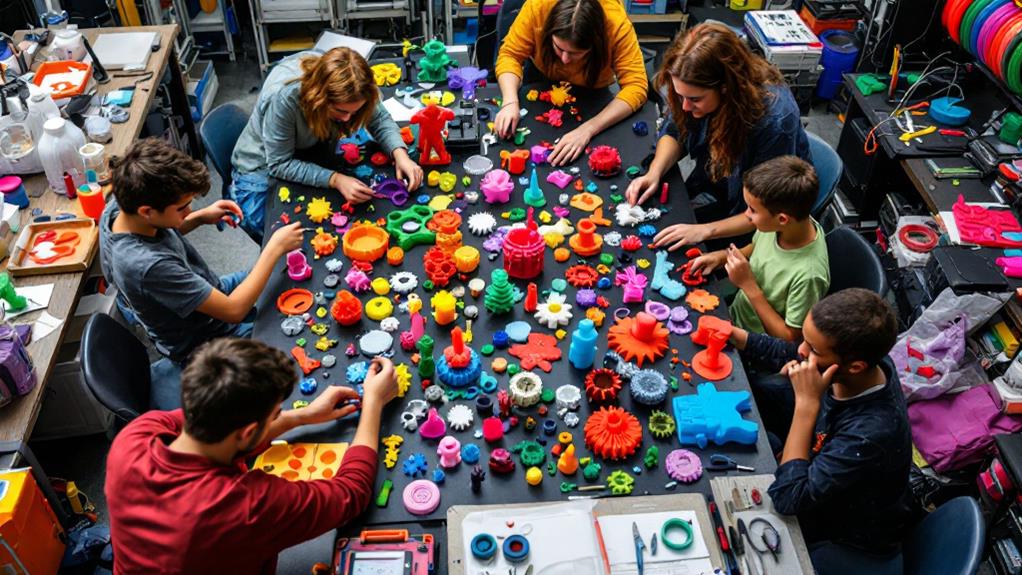
Creating educational models with a 3D printer opens up a world of interactive learning possibilities. Imagine designing 3D anatomy models that let you investigate the human body in intricate detail. You can print models of organs or body systems, making it easier to understand how everything works together. These hands-on tools are perfect for at-home learning or enhancing classroom education, offering a tangible way to visualize complex concepts.
You can also create interactive science kits that bring scientific principles to life. With your 3D printer, design components for experiments that demonstrate physics, chemistry, or biology concepts. For example, print a set of gears to understand mechanical advantage or create molecular models to see chemical bonds in action. These kits encourage investigation and problem-solving, making learning active and engaging.
Creating Puzzle Challenges
Puzzle challenges crafted with a 3D printer can transform traditional problem-solving into a hands-on adventure. By creating 3D puzzle designs, you engage both kids and adults in interactive puzzle games that stimulate the mind. Imagine designing customizable puzzle pieces that can be mixed and matched to create endless possibilities. This allows for a unique approach to puzzle solving techniques, where you can tailor the difficulty to match the solver's skills.
Educational puzzle challenges are a fantastic way to introduce puzzle-based learning into your environment. You can create themed puzzle collections that focus on specific subjects, like math, science, or history, making learning fun and engaging. Not only do these puzzles teach problem-solving, but they also encourage critical thinking and creativity.
Collaborative puzzle projects take this a step further by bringing people together to tackle puzzles as a team. This fosters communication and teamwork, essential skills in any educational setting or family gathering. Plus, with a 3D printer, you can continually update and reinvent your puzzles, ensuring they remain fresh and challenging. Immerse yourself in this groundbreaking domain and watch as your skills in puzzle creation and problem-solving flourish.
Exploring Structural Engineering
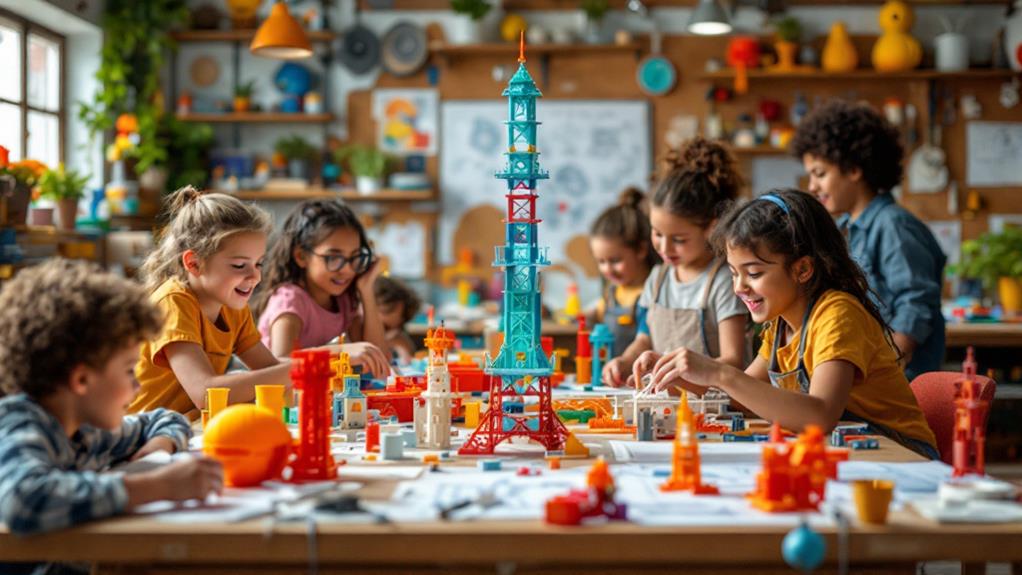
Several exciting opportunities arise when you engage yourself in the domain of 3D printing for structural engineering projects. Initially, plunge into creating architectural models that mimic buildings and bridges. These scaled-down versions let you investigate design principles without the constraints of full-scale construction. With 3D printing, you can test how different material properties affect general structural stability.
Conducting load bearing analysis on your models offers insight into how real-world structures endure diverse forces. You can experiment with different shapes and configurations to see which designs hold up best under pressure. Stress testing becomes a fascinating exercise, allowing you to identify weak points and optimize your creations for maximum efficiency.
You'll also appreciate how 3D printing allows rapid prototyping, so you can quickly adjust your designs based on testing results. This hands-on approach enriches your understanding of structural engineering concepts, bridging the gap between theory and practice. As you refine your skills, you'll gain a deeper appreciation for the intricate balance of forces that keeps structures standing tall.
Developing Wearable Tech
Shifting from the territory of structural engineering, you find yourself in the groundbreaking world of wearable technology, where 3D printing sparks a wave of creativity and practicality. Wearable tech offers endless possibilities for integrating innovation into everyday clothing and accessories. Imagine crafting your own smart fabrics using 3D printing. These fabrics aren't just about style; they can include sensors and circuits for dynamic functions. You could design a jacket that changes color based on temperature or a hat that lights up with your heartbeat.
Health monitoring is another exciting aspect of this tech domain. By incorporating sensors into wearable items, you can keep track of essential signs like heart rate, body temperature, or even hydration levels. This not only makes your creations functional but also personalized to your health needs. Picture a bracelet that alerts you when your heart rate spikes or a shirt that tracks your daily steps.
For a project, start with a simple design—perhaps a wristband—using conductive thread and a small sensor. As you gain confidence, expand to more complex garments. With 3D printing, the future of wearable tech is literally in your hands, waiting for your unique touch.
Producing Home Decor Items
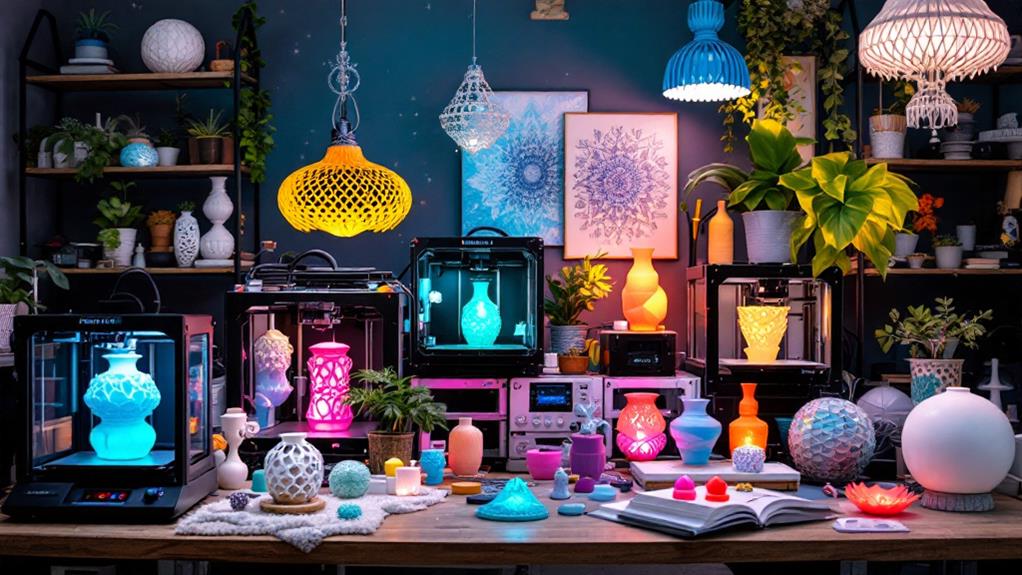
With regard to producing home decor items with a 3D printer, the possibilities are nearly limitless. You can transform your living space with creative, personalized pieces that reflect your style. Imagine designing home accessories that are not only visually striking but also functional. With 3D printing, you can craft:
- Decorative vases that match your favorite flowers or season
- Personalized wall art that showcases your unique taste and creativity
- Unique sculptures that serve as conversation starters for guests
- Seasonal decorations to keep your home festive year-round
- Custom picture frames that perfectly complement your cherished photos
Experimenting With Eco-Friendly Materials
While crafting personalized home decor items is exciting, incorporating eco-friendly materials into your 3D printing projects adds a rewarding layer of sustainability. By using biodegradable filaments, you can create sustainable designs that won't contribute to landfill waste. These filaments are made from renewable resources like corn starch or sugarcane, allowing you to engage in green printing without compromising on quality or creativity.
Consider using recycled plastics in your 3D printing endeavors. These upcycled materials are not only durable but also help reduce the environmental impact of plastic waste. By choosing recycled options, you're supporting an eco-conscious project and contributing to a circular economy where materials are continuously reused and repurposed.
Incorporating eco-friendly materials encourages you to think differently about your projects. Focus on sustainable designs that minimize material usage and energy consumption. Challenge yourself to transform everyday items into something new and functional, reducing the need for new resources. By adopting these practices, you're not only fostering innovation but also instilling environmental responsibility in your projects. Remember, every small step towards green printing can make a significant difference in preserving our planet for future generations.


